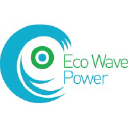This conference call transcript was computer generated and almost certianly contains errors. This transcript is provided for information purposes only.EarningsCall, LLC makes no representation about the accuracy of the aforementioned transcript, and you are cautioned not to place undue reliance on the information provided by the transcript.
5/12/2025
Greetings and welcome to the EcoWave Power first quarter 2025 earnings call. At this time, all participants are on a listen-only mode. If anyone should require operator assistance during the conference, please press star zero on your telephone keypad. Please note, this conference is being recorded. I will now turn the conference over to your host, Mr. Aaron Yehuda, CFO of EcoWave Power. Sir, you may begin.
Thank you. Good morning, everyone, and thank you for joining us to EcoWave Power's first quarter 2025 earning call. I'll begin with a brief overview of our financial results and capital allocation priorities. For the three months ended March 31, 2025, EcoWave Power recorded a net loss of $500,005 slightly improved compared to $527,000 in the same period last year. This reflects our continued effort to maintain cost discipline while supporting project development in multiple regions. Operating expenses. totaled $765,000, up from $659,000 in Q1 2024. This increase was mainly due to the growth of engineering and execution work related to our Los Angeles project and the upcoming installation in Portugal. Our investments are focused and aligned with planned construction and deployment timelines. We also saw an improvement in net financing income, which helped us offset the increase in operating costs. This contributed to the overall stability of our bottom line. As of March 31st, our cash and short-term deposits stood at 8.8 million U.S. dollars compared to 9.3 million U.S. dollars at year-end 2024. The change is primarily tied to development stage spending in Los Angeles and Portugal, as well as early stage activities in India and Taiwan. Looking ahead, we expect to move forward with our pilot sale agreement in Taiwan and anticipate progress on contracts in India subject to final documentation. In parallel, our floaters in Los Angeles are under construction, and we expect it to be finalized by the end of Q2. We remain focused on controlled capital use, maintaining a healthy balance sheet while moving forward with the commercialization of our wave energy technology. With that said, I will now turn the call over to Ina to share updates from our global operations and partnerships. Ina, you may begin.
Thank you, Aaron, and thank you all for joining us today. The first quarter of 2025 has been a period of meaningful advancement for EcoWave Power. From a financial standpoint, we delivered a 4.2% reduction in net loss compared to Q1 of last year and finished the quarter with $8.8 million in cash and short-term deposits. This balance allows us to continue investing in our global pipeline while preserving the flexibility to pursue new opportunities. In Los Angeles, we moved swiftly from permitting to production. In March, the Port of Los Angeles issued our revocable permit, and in April, we signed a floated manufacturing agreement with Always Metal, which shall be completed by the end of Q2 2025. In Portugal, under our 20 megawatt concession agreement with APDL, we finalized engineering designs with MOC Engineering in March and submitted our full execution plan. Early groundwork has begun, and pending APDL approval, we will start equipment procurement and installation later this year, keeping us on track for a 2026 startup. Our partnerships in India and Taiwan reached new milestones in Q1. The MOU with Barat Petroleum sets the stage for site assessment at the Mumbai oil terminal, and we anticipate a purchase order in Q2. In Taiwan, our sale agreement with IK International Ocean Energy has moved into detailed permitting phase, with full contract execution expected by July. Back in Israel, the EWP EDF-1 installation at Jaffa Port logged zero downtime in Q1. The company also conducted successful testing with 10 floaters in wave heights of 1.2 to 2 meters, demonstrating an average power output of 13 kilowatts, validating consistent performance in moderate waste conditions. The peak energy production was 40 kilowatts. These results support projections that scaling the system could proportionally increase output to 26% with 20 floaters and 39 with 30 floaters. These results validate our design and guide our 2025 R&D focus on reducing floater costs and streamlining installation. To strengthen our governance and strategic direction, we established our advisory board in March and welcome Hilary Ackerman as its first member. Hillary's extensive experience in energy, sustainability, and risk management will be a valuable resource as we scale from pilots to megawatt-scale deployment. In closing, I want to express my gratitude to our team, our partners, and you, our shareholders, for your continued confidence. We remain committed to building a diversified, resilient wave energy business, and I look forward to sharing further progress as the year unfolds. Thank you.
Thank you, ladies and gentlemen. This concludes today's call. You may disconnect your lines at this time, and we thank you for your participation.
